Bay Birding Challenge: East Bay Scrub Jays
By Derek Heins (East Bay Scrub Jays Team Captain)
 Team East Bay Scrub Jays – Ilana DeBare
Team East Bay Scrub Jays – Ilana DeBare
On Saturday, April 1, Anne Ardillo, Dan Roth, Clay Anderson, Alex Henry, Tara McIntire, Jeff Manker, Eric Schroeder and I comprised the East Bay Scrub Jays, competing against the Stork Raven Mad team from San Francisco as part of Golden Gate Bird Alliance’s “Bay Birding Challenge”. We also had Jaewon Lee, a member of the UC Berkeley Bears for Birds Audubon club, with us to help document and capture our “Big Day”.
We executed an extensive plan that took into consideration the unique physical layout of our side of the Bay, timing of tides, and the interesting time of year regarding spring migration.
When planning a one-day effort, it is fascinating to learn when each non-resident species begins its migration movements. In our case, we have a lot of waterfowl and passerines starting their migrations north in March. This often made what a couple weeks earlier was an easy species to find, very difficult. On the other hand, in the week or two leading up to April 1, we started to see reports of spring arrivals such as Wilson’s Warblers and Pacific-slope Flycatchers.
So, with that in mind, we met a few minutes before daylight (the agreed upon start and end times being dawn and dusk) at the Skyline Gate Staging area of Redwood Park, our only scheduled stop high in the Oakland Hills. As expected, our first species recorded was a Great Horned Owl hooting. Fortunately, it was not foggy and as it got lighter, activity picked up nicely as we started finding our key targets including a Varied Thrush singing, both Red-breasted and Pygmy Nuthatch, Brown Creeper, Purple Finch, Hairy Woodpecker and Townsend’s Warbler. The best bird in that location was an overwintering Townsend’s Solitaire, first heard calling but later seen with great views. We also picked up Cooper’s, Sharp-shinned Hawks and Western Bluebird. Our pipe dream of getting a Pileated Woodpecker didn’t pan out.
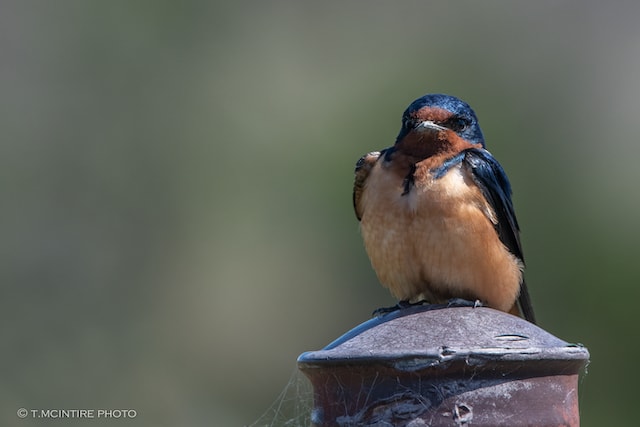 Barn Swallow by Tara McIntire
Barn Swallow by Tara McIntire
Energized by 36 quality species at our first stop, we drove to Lake Temescal where 20 American White Pelicans were lit up by the morning light. We picked up all five expected swallow species, a Green Heron flew across the lake and two recently arrived Wilson’s Warblers were feeding in the willows.
We then headed down to the Bay at Miller Knox Park where we immediately found a Eurasian Wigeon amongst American Wigeon in the main pond, along with a Gadwall pair.…

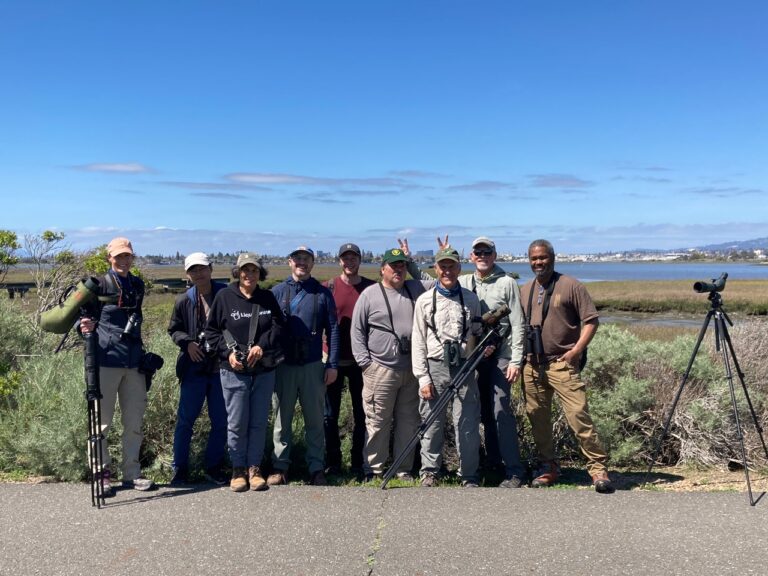
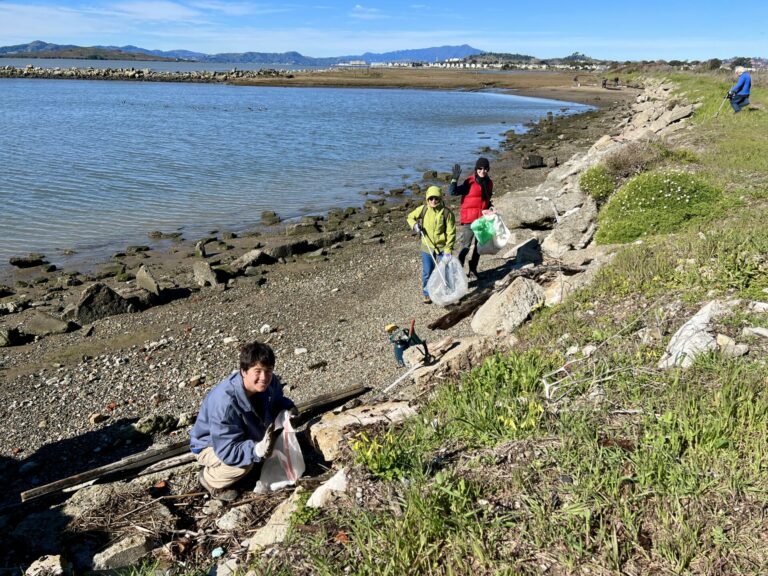
 While entanglements can be fatal for ospreys, fortunately the one trailing material here (lower left picture on the posterboard) was disentangled at the Port of Alameda nest by Craig Nikitas of Bay Raptor Rescue with the help of GGBA.
While entanglements can be fatal for ospreys, fortunately the one trailing material here (lower left picture on the posterboard) was disentangled at the Port of Alameda nest by Craig Nikitas of Bay Raptor Rescue with the help of GGBA.
 Golden Gate Bird Alliance volunteers at the Meeker Slough cleanup – Janet Carpinelli
Golden Gate Bird Alliance volunteers at the Meeker Slough cleanup – Janet Carpinelli
 Before and After Meeker Slough Richmond Shoreline Cleanup
Before and After Meeker Slough Richmond Shoreline Cleanup
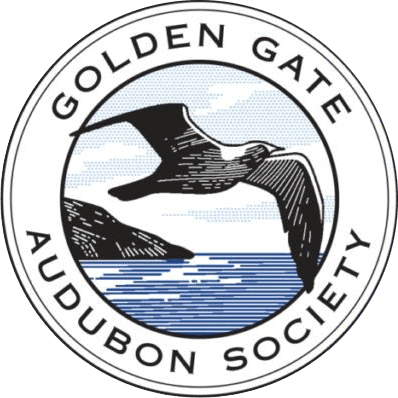
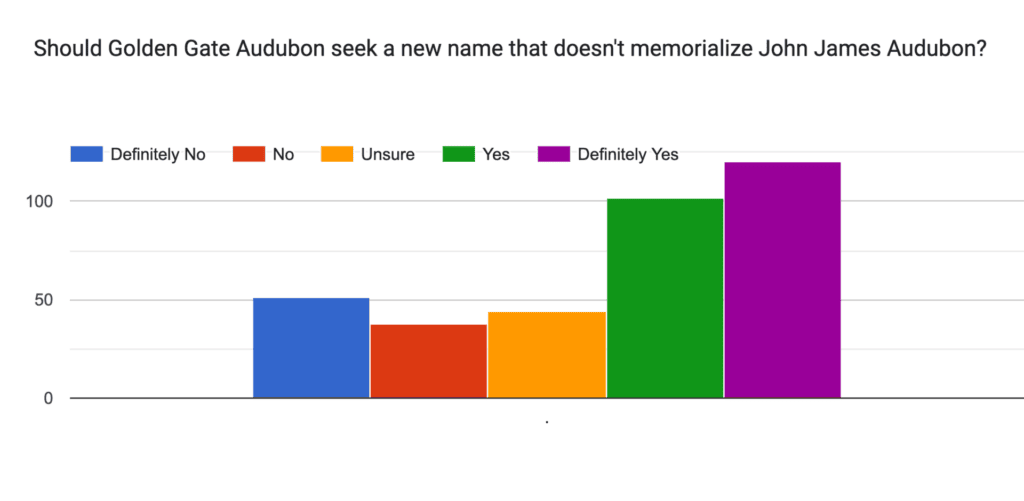 Results from the “Audubon” Name Change Preliminary Survey.
Results from the “Audubon” Name Change Preliminary Survey.
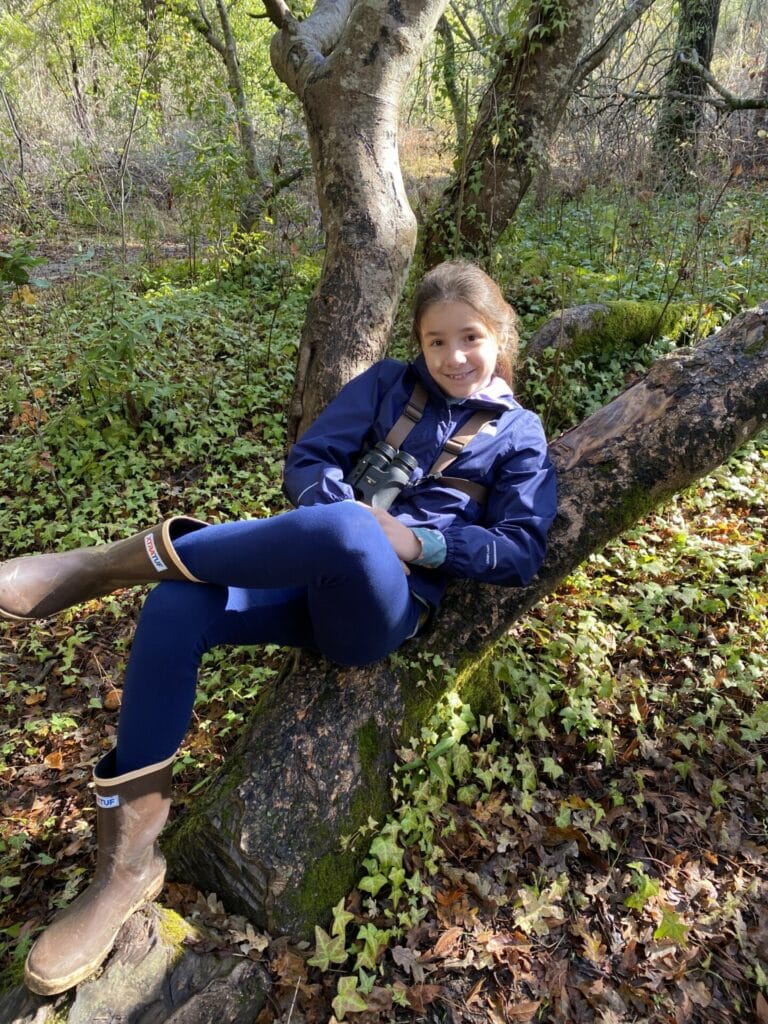
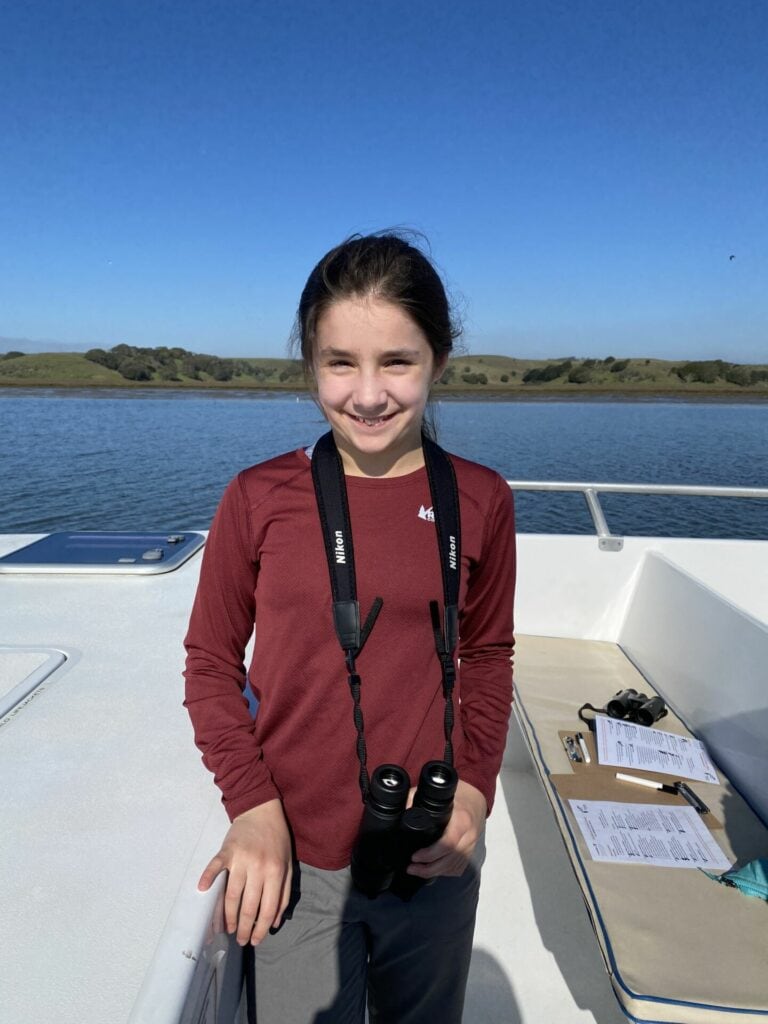 Hannah Breckel on an ecotour at Elkhorn Slough.
Hannah Breckel on an ecotour at Elkhorn Slough.

 Portrait of John James Audubon, 1826, by John Syme. White House collection.
Portrait of John James Audubon, 1826, by John Syme. White House collection.